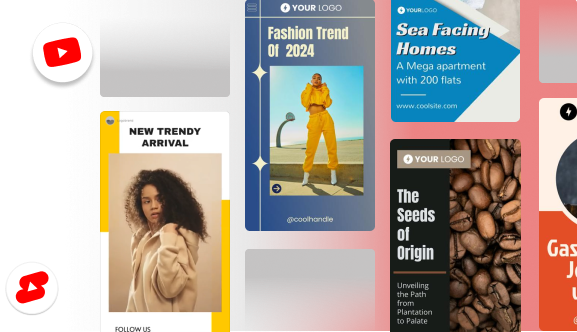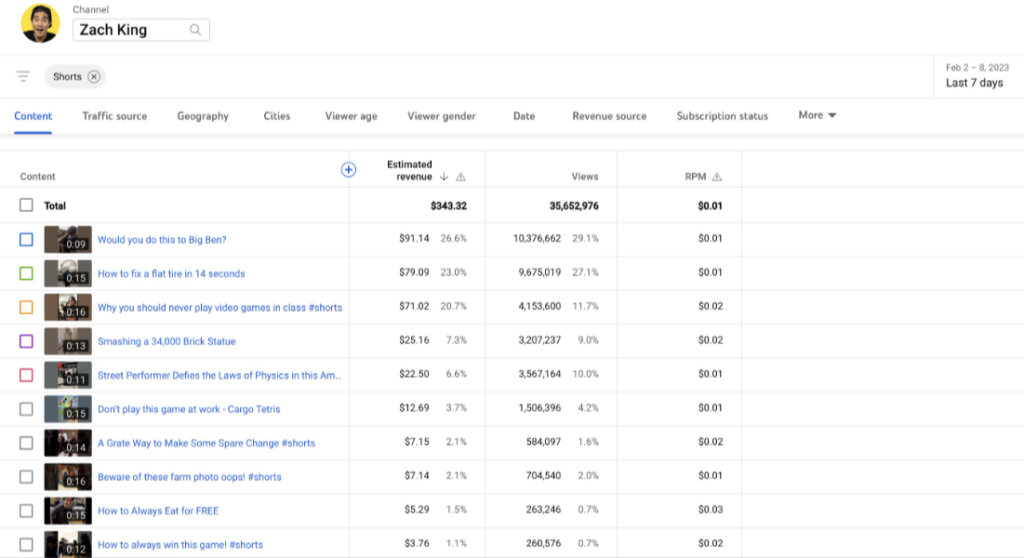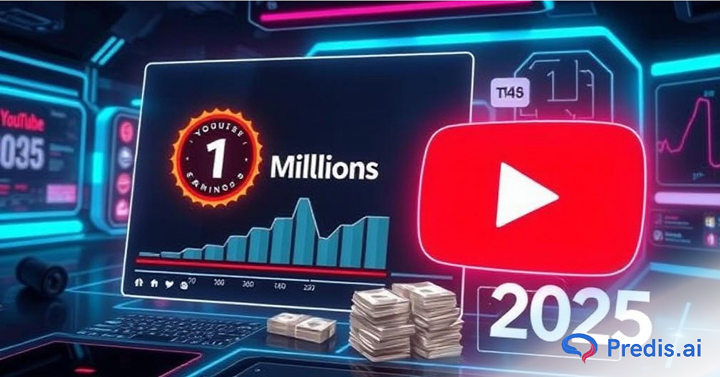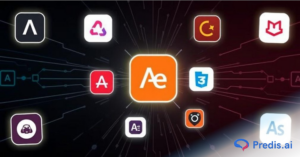YouTube Shorts has become a massive platform for creators, offering quick, engaging videos that reach millions daily. With 1.5 billion monthly active users and a total of over 5 trillion views, Shorts is a powerful tool for content creators looking to grow and monetize their videos.
Just like any other social media platform, YouTube is also betting big on short-form content. Like Instagram reels and TikTok reels, YouTube Shorts has also gained immense popularity.
Creators are also joining the race and producing more and more short-form content to keep their audience engaged. With these numbers in mind, the real question for any YouTube creator is – How much does YouTube Shorts pay for 1 million views?
In this guide, we’ll break down how YouTube Shorts pay for 1 million views, what factors affect your earnings, and how you can maximize your revenue. Let’s dive in!
Does YouTube Pay for Shorts?
Although the primary source of revenue is advertisements played between your videos, earning revenue through YouTube Shorts is slightly different from earning through long-form videos.
In the case of long-form videos, you are paid revenue based on the ads that your viewers watch.
But, in the case of Shorts, the process goes like this:
- YouTube clubs together all the revenue from ads shown between Shorts throughout the platform for every country.
- Then, it calculates how much of the revenue is needed to cover music licensing for tracks used in Shorts. That money is paid directly to music partners. The remaining amount goes into the Creator Pool.
- YouTube allocates a percentage of the total Creator Pool to each monetizing creator based on their share of total views in each country. For example, in your country, if you get 5% of the total Shorts views uploaded by monetizing creators, you’ll be allocated 5% of the revenue in the Creator Pool.
- Then, from this amount allocated to you, YouTube will take 55%, and you will get 45% of it.
How to Qualify for YouTube Shorts Monetization?
If you want to earn revenue from YouTube Shorts, then you need to be a part of the YouTube Partner Program (YPP), the requirements of which are as follows:
- You must have 1000 subscribers.
- You need to get 4,000 public watch hours from long-form videos in the last 365 days or 10 million public Shorts views in the last 90 days.

What is CPM and RPM?
It’s important to understand metrics like CPM and RPM to keep up with this article further.
- Revenue Per Mille (RPM) is a metric that shows how much money you’ve earned per 1,000 video views.
- Cost per 1,000 impressions (CPM) is a metric that shows the amount of money advertisers are spending to show ads on YouTube.
In other words, it is the cost an advertiser pays for 1,000 ad impressions. Any time an ad is displayed, it is counted as an impression.
RPM is the better metric to track when you want to test the effectiveness of your content strategy.
How Much Does YouTube Shorts Pay for 1 Million Views?
If you’re thinking about making good money from YouTube Shorts, then you need to know this.
Zach King, famous for creating mind-bending effects videos, tweeted about his YouTube Shorts ad revenue from Feb 2 – Feb 8, 2023, for approximately 35 million views. It was just $343.

IMDb further reports that Zach King made only $2918.10 from 196.4 million views during his first month on YouTube with Shorts.
Rob Wilson, YouTuber-in-residence at VidIQ, says about YouTube Shorts – “Yeah…they’re not going to make you rich”.
VidIQ just made $95 from 1 million Shorts views.
“At this rate, you need to bring in 100 million monthly views a month to make $10,000”, Rob further says.
So YouTube Shorts isn’t the best way to make money from YouTube. Although the revenue greatly depends on the factors discussed in the next section, the RPM isn’t quite what you’re looking for.
The common agreement among YouTube creators is that the RPM is coming in around $0.01 to $0.06 per 1000 views. That’s about $10 to $60 for a million views.
On YouTube, long-form content is where the money lies.
Up next, let’s explore five key factors that influence Shorts earnings and how you can maximize your revenue!

5 Factors That Influence YouTube Shorts Earnings
Your revenue from YouTube Shorts depends a great deal on the following factors:
1. Engagement and User Interaction
Engagement, including likes, comments, and shares, plays a pivotal role in influencing earnings. YouTube’s algorithm considers these engagement metrics when suggesting Shorts to users.
Consequently, videos with robust engagement are more likely to receive recommendations, leading to a surge in views and, ultimately, ad revenue.
2. Audience Demographics
Your YouTube Shorts revenue can be greatly influenced by the demographic makeup of your audience. Advertisers frequently allocate larger payments to target particular demographics.
In regions where people are more inclined to purchase their product or where purchasing power is higher, the CPM (Cost Per Mille) is also higher, while in areas where people are less inclined to make purchases, the CPM is notably lower.
In the same video by VidIQ above, Rob says that the CPM they receive from viewers in the United States is 10 times higher than the CPM received from their Indian audience.
3. Topic of your Videos
The advertisements displayed over your content are determined by the subject matter of your content. For instance, if your content relates to web hosting services, the CPM will likely be substantially higher compared to content related to dog food.
Your content’s topic dictates the advertisements, and the advertisements, in turn, influence the CPM.
4. Ad Format
YouTube features two kinds of ads that appear alongside your content: skippable and non-skippable.
If your viewers opt to skip the ads before completion, you won’t receive any payment from the advertiser. However, if they watch the ad in its entirety, you earn revenue.
With non-skippable ads, viewers are compelled to watch the entire ad before proceeding to the video. Consequently, you receive payment for each ad shown. YouTube determines when to display skippable and non-skippable ads.
If you want to create sponsored ad videos for YouTube Shorts. You can design YouTube Ads with our AI video maker in seconds. Use our templates, animations, vectors, stock images, and videos to make engaging videos that improve ad performance.
5. YouTube Shorts Fund vs. Ad Revenue
Before ad revenue sharing started, YouTube Shorts paid creators through the Shorts Fund – a $100M bonus program rewarding high-performing creators.
However, YouTube replaced the Shorts Fund with ad revenue sharing in 2023. This meant that earnings now depended on ad performance, not a fixed bonus. Creators in the YouTube Partner Program (YPP) make money through ads. Shorts monetization is now more predictable than the Shorts Fund model.
Although the Shorts Fund is no longer active, creators can still earn through ads, Super Thanks, memberships, and brand deals.
Creators who optimize their content and focus on engagement can increase their revenue significantly. Up next, let’s dive into proven strategies to maximize YouTube Shorts earnings!
How to Increase Your YouTube Shorts Revenue?
Making money from YouTube Shorts isn’t just about getting views – it’s about maximizing revenue per view. By improving your content strategy, using monetization tools, and staying on top of trends, you can boost your earnings significantly. Here’s how:
1. Create Engaging, High-Retention Shorts
The longer people watch your Shorts, the better YouTube ranks them in the algorithm. High-retention videos get more exposure, more ad placements, and more revenue.
Tips to boost retention:
- Hook viewers in the first 3 seconds with eye-catching visuals.
- Keep videos fast-paced and engaging – no slow intros.
- Use captions, zoom effects, and text overlays to hold attention.
- End with a looping effect to make people rewatch.
The higher your watch time, the more YouTube promotes your content, leading to higher ad revenue.
Want an easier way to create high-retention Shorts? Predis AI helps you generate engaging Shorts with optimized captions, hashtags, and AI-powered templates – all optimized for better audience retention!
2. Post Consistently to Increase Views
Uploading regularly is key to staying relevant. The YouTube algorithm favors active creators, so posting frequently helps increase reach and monetization potential.
Best Posting Frequency for YouTube Shorts:
- 3-5 Shorts per week for beginners.
- Daily Shorts for rapid growth.
- Posting multiple Shorts a day? Test what works best for your audience.
The more active you are, the higher your chance of getting 1 million+ views, leading to better earnings.
3. Leverage Collaborations & Sponsorships
Relying only on YouTube Shorts ad revenue can be limiting. Instead, partner with brands for sponsorships. Many companies want to advertise through Shorts creators, especially in high-engagement niches.
How to land sponsorships?
- Build an audience in a specific niche (fitness, tech, fashion, etc.).
- Reach out to brands offering promotional deals in your industry.
- Create sponsored Shorts showcasing products in a natural, engaging way.
Sponsorships can easily make up for ad revenue fluctuations, helping you earn more per Short.
4. Use YouTube’s Fan Monetization Features
YouTube offers multiple revenue streams, not just ad payouts. You can make money through:
- Super Thanks: Viewers can tip you directly on Shorts.
- Channel Memberships: Offer exclusive content for paid subscribers.
- Merch Shelf: Sell branded products through your Shorts.
Creators who use multiple monetization methods earn significantly more than those who rely only on YouTube ad revenue. A lot of creators Increase earnings by running a 24/7 live stream with LiveReacting to repurpose existing content.
5. Optimize Shorts with Trending Sounds & Hashtags
Trending audio and hashtags help increase visibility and reach. The more your Shorts appear in recommended feeds, the more revenue potential they have.
How to use trending sounds:
- Search YouTube’s “Shorts Trending” section for popular sounds.
- Add viral music or effects that fit your content.
- Use native YouTube sounds for better discoverability.
Hashtag strategy for YouTube Shorts:
- Use 3-5 relevant, high-ranking hashtags in every Short.
- Include #Shorts to increase chances of appearing in Shorts feeds.
- Mix trending hashtags with niche-specific tags to target the right audience.
By optimizing with trending elements, you increase the likelihood of hitting the YouTube Shorts viral wave, leading to higher earnings.
The more strategic you are, the higher your chances of making real money from Shorts! Now, let’s move on to the Conclusion and FAQs to clear up any lingering questions!
Stand Out on YouTube Shorts with AI Content 🌟
Conclusion
YouTube Shorts has opened new doors for content creators looking to earn from short-form videos. YouTube shorts pay for 1 million views but not as much as anticipated by many creators.
To maximize your Shorts revenue, focus on high-retention videos, experiment with trending sounds, and post regularly to stay in the algorithm’s favor. The more engaging your content, the better your chances of earning from ad revenue and brand deals.
If you want to boost your YouTube Shorts strategy, a tool like Predis.ai can help! From content ideas and captions to AI-generated video clips, Predis.ai makes short-form content creation effortless. Sign up today and start optimizing your YouTube Shorts like a pro!
FAQs
The payment varies based on factors like CPM, audience location, and ad revenue share. On average, 1 million views on YouTube Shorts can earn between $10 to $100. However, creators who leverage sponsorships, YouTube’s fan monetization, and affiliate marketing can boost their earnings significantly.
Yes, in many cases. YouTube Shorts pays more per 1,000 views compared to TikTok and Instagram Reels, especially after YouTube introduced ad revenue sharing. While TikTok’s Creator Fund has lower payouts, YouTube Shorts offers multiple ways to monetize your content, including ads, memberships, and Super Thanks.
Posting frequency depends on your niche, engagement rate, and audience response. Many creators see success by posting 1-3 Shorts daily. However, quality matters more than quantity. Focus on creating high-retention, engaging content to maximize revenue instead of just pushing out multiple videos.
Yes, but with limitations. If you’re not part of the YouTube Partner Program (YPP), you can still earn through sponsorships, brand deals, and affiliate marketing. However, to get ad revenue from Shorts, you need to meet YouTube’s monetization requirements (1,000 subscribers and 10 million Shorts views in 90 days).
No, YouTube Shorts and long-form videos have different monetization models. Traditional videos earn from CPM-based ads, which generally pay more per view than Shorts. However, Shorts relies on revenue from ads between videos in the Shorts feed. While long-form videos can generate higher earnings, Shorts provide faster reach and engagement.
By balancing Shorts with long-form content, you can maximize your overall YouTube revenue strategy.















